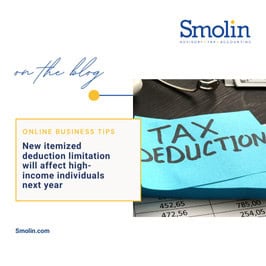If you have a flexible spending account (FSA) through your employer to help pay for health or dependent care expenses, now’s a good time to check your balance. FSAs save taxes, but they generally require you to incur expenses to use the funds by year end or forfeit them. Here’s a refresher on the rules and limits.
FSAs for Health Care
A maximum pretax contribution of $3,300 to a health care FSA is permitted in 2025. (This amount is annually adjusted for inflation and will increase to $3,400 in 2026.) You use the pretax dollars to pay for medical expenses not covered by insurance.
An FSA allows you to save taxes without having to claim a medical expense deduction. This is beneficial because, to claim the deduction, you must itemize deductions on your tax return and the expenses are deductible only to the extent that they exceed 7.5% of your adjusted gross income. This threshold can be hard to meet. An added benefit of FSA contributions is that they aren’t subject to Social Security or Medicare taxes.
However, the “use-it-or-lose-it” rule means you must incur qualifying medical expenses by the last day of the plan year (December 31 for a calendar year plan) — unless the plan allows a grace period. A grace period can’t extend beyond the 15th day of the third month following the close of the plan year (March 15 for a calendar year plan). Alternatively, your FSA might allow you to roll over a balance of up to $660 to 2026. (The limit for rollovers from 2026 to 2027 will be $680.)
Don’t Lose Your FSA Dollars: Eligible Expenses to Consider
Take a look at your year-to-date FSA expenditures now to see how much you still need to spend. What are some ways to use up the money? Before year end (or the extended date, if permitted), schedule certain elective medical procedures, visit the dentist or buy new eyeglasses. Even over-the-counter medications and health-related supplies may be eligible.
FSAs for Dependent Care
Some employers also allow employees to set aside funds on a pretax basis in dependent care FSAs. A $5,000 maximum annual contribution is permitted ($2,500 for a married couple filing separately) in 2025. (This amount isn’t annually adjusted for inflation. But under the One Big Beautiful Bill Act, the limit will increase to $7,500 beginning in 2026.)
Dependent care FSAs can be used to pay dependent care expenses for:
- A child who qualifies as your dependent and who is under age 13, or
- A dependent or spouse who is physically or mentally incapable of self-care and who has the same principal place of abode as you for more than half of the tax year.
Like health FSAs, dependent care FSAs are subject to a use-it-or-lose-it rule, and grace period relief may apply. But rollovers to the next year aren’t allowed. Therefore, it’s a good idea to check your dependent care expenses to date.
Wrapping up 2025
As 2025 wraps up, be sure to review your FSA balance and check whether your plan offers a grace period or rollover option. Then take steps before year end to ensure you don’t forfeit any FSA funds. Ask your HR department any questions you have about your specific plan. A Smolin Representative can answer your tax-related questions and provide more year-end tax planning tips.









